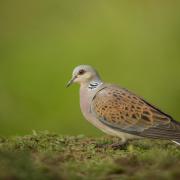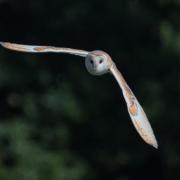Our rare snakes, lizards and amphibians are right at home on brownfield sites, which can be challenging for developers | Words: Suzy Stennett

Among our considerable flora and fauna, just six reptiles are native to Britain - the common or viviparous lizard, the sand lizard, the slow worm, the grass snake, the adder and the smooth snake.
All six, plus two amphibians - the great crested, or warty newt, and the natterjack toad - are protected against intentional killing, injuring, or taking from the wild under the Countryside & Wildlife Act 1981.
The four rarest species, the sand lizard, the smooth snake, the great crested newt and the natterjack toad, are classed as European protected species and are further protected under The Conservation of Habitats and Species Regulations 2017.

These state that it is an offence to deliberately capture or kill, disturb, take or destroy the eggs, damage or destroy a breeding site or resting place, keep, transport, sell or exchange, or offer for sale or exchange, such an animal.
Reptiles are found in a wide variety of habitats, including heaths, moors and woodland edges, as well as urban settings. They need a structurally diverse habitat with sunlight at ground level so they can bask in the sun and shelter from the elements in order to maintain their body temperature.
Brownfield sites with disturbed ground, rough grassland and uneven structures can be ideal, which could be why reptiles and property developers often come up against each other, vying for the same land.

Developers must ensure that no protected species are harmed during construction, and are advised to commission an ecology survey - typically a prerequisite of planning permissions - to investigate whether there are any protected species living on the proposed site before commencing work.
The presence of reptiles on a site won't necessarily prevent development. Normally, before work can start, local planning authorities require 'mitigation plans' and, where necessary, proposals for 'compensation'.
Mitigation plans show what actions are to be taken to avoid, reduce or manage any negative effects on protected species on site, and 'compensation' proposals define the measures to be taken to enhance and manage an alternative site to accommodate the species.

If it's not possible to work around the reptiles, the next best option is to relocate them within the site, with compensation measures to ensure there is no net loss to the resident reptile population. If no solution can be found, permission may be granted to translocate the reptiles to another specially prepared site.
Situations where it is predictable that reptiles are likely to be killed or injured could legally constitute intentional killing or injuring.
So, if the reptiles are to remain on site, developers are advised to erect special plastic membrane fencing to prevent them from moving into areas where there are earthworks and other damaging activities going on, until there is no further risk.

Surveying and mitigating European protected species requires licenses from Natural England and Defra which are only issued to specialist ecology consultants. Surveying and moving reptiles isn't easy.
They hibernate between November and February, and in summer, when they may be seeking shade, they're more difficult to find. Youngsters are delicate to handle, and gravid females can be badly affected by capture. Moving reptiles in autumn is also problematic as they may find it difficult to adjust in time for the critical hibernation period.
So, the best time is restricted to April, May and September. However, one 'season' may not be enough to survey and capture the entire population from a site, which could delay construction until the following year.
Developers are expected to fund the ecology report and mitigation and compensation work, so it can be tempting to flout regulations.
Sergeant Brian Calver, of Suffolk's Rural Policing Team, says most cases of harm to reptiles and their habitats are a result of property development.
He requests that anyone aware or suspicious of activities endangering reptiles and their equally protected amphibious cousins should alert the rural policing team by calling 101 or emailing ruralcrimeteam@suffolk.pnn.police.uk.
A serious offence
Individuals and companies can be liable for offences against reptiles and amphibians under the Wildlife and Countryside Act 1981.
Successful prosecution carries a fine of up to £5,000 and/or a maximum prison sentence of six months.
Magistrates can impose penalties per offence - harm to more than one animal may be taken as separate offences.
Prosecution under The Conservation of Habitats and Species Regulations 2017 carries an unlimited fine.
'



























